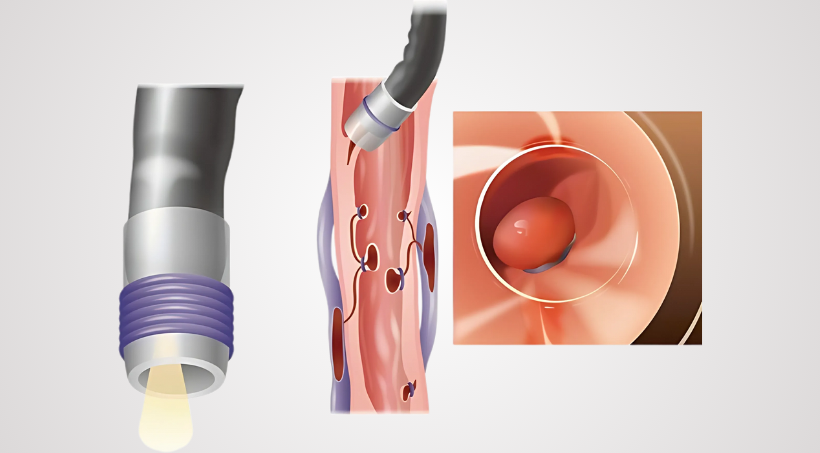- AK Superspeciality Clinic, Unit-208, Kul Scapes, Opposite to Reliance Mart, Tukaram Nagar, Kharadi
- +91 90960 45072

Definition: Endoscopic varices banding is a procedure used to treat esophageal varices—enlarged veins in the esophagus that can bleed, often due to liver cirrhosis. The procedure involves placing rubber bands around the varices to cut off their blood supply, causing them to shrink and reduce the risk of bleeding.
Causes: Esophageal varices usually develop due to:
- Liver Cirrhosis: Scar tissue in the liver obstructs blood flow, causing increased pressure in the portal vein (portal hypertension) and leading to varices.
- Portal Hypertension: High blood pressure in the portal vein system, often due to liver disease.
Symptoms: Symptoms of esophageal varices include:
- Vomiting blood (hematemesis).
- Black, tarry stools (melena).
- Lightheadedness or fainting (due to blood loss).
- Signs of chronic liver disease such as jaundice, ascites, and encephalopathy.
Diagnosing:
- Endoscopy: Direct visualization of varices through an endoscope.
- Imaging Tests: Ultrasound or CT scan to assess the liver and portal vein.
- Blood Tests: To evaluate liver function and coagulation status.
Treatment Options:
- Endoscopic Banding: Bands are placed around the varices to prevent bleeding.
- Medications: Beta-blockers to reduce portal hypertension.
- Shunt Surgery: In severe cases, a shunt may be placed to reduce portal pressure.
- Liver Transplant: For advanced liver disease.
Prevention Tips:
- Regular Monitoring: For patients with cirrhosis, regular endoscopic surveillance is crucial.
- Avoid Alcohol: To prevent worsening of liver disease.
- Manage Liver Disease: Treat underlying liver conditions to reduce the risk of varices.
- Medications: As prescribed to control portal hypertension.
Conclusion: Endoscopic varices banding is a life-saving procedure that significantly reduces the risk of bleeding in patients with esophageal varices. Combined with lifestyle modifications and appropriate medical management, it helps prevent severe complications in individuals with liver cirrhosis.

